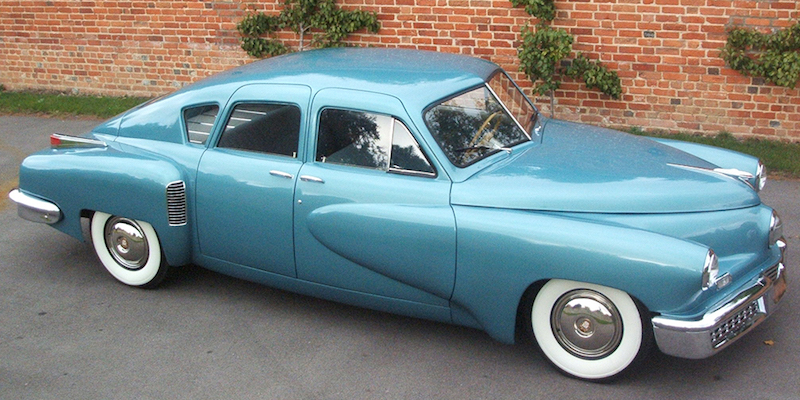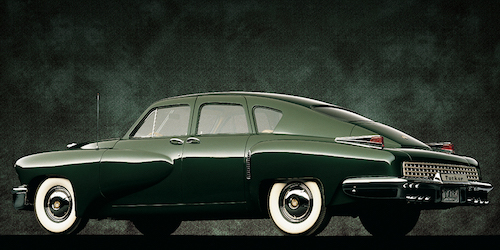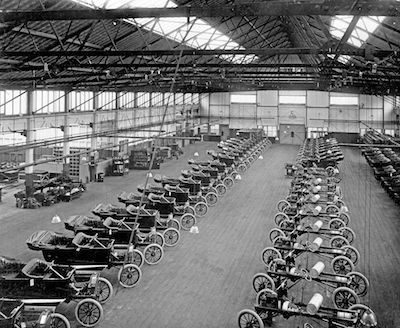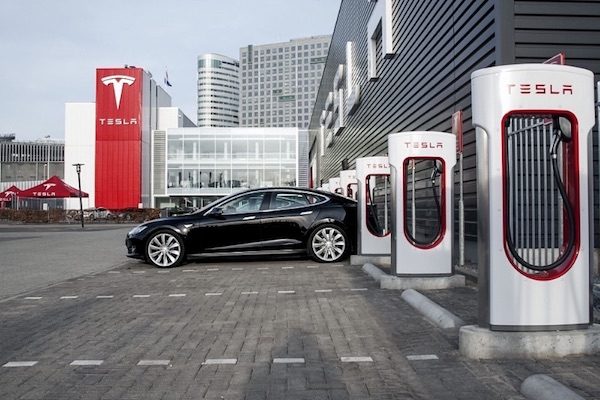By Greg Zyla —
Q: Greg, I saw something online that said Elon Musk was like Preston Tucker in that his vision for car building is so different from the norm. What are your feelings on this, and for those who don’t know who Tucker is perhaps a quick history? Steve S., Lancaster, Pa.
A: Steve, I did a search and found a few things that compared Musk to Henry Ford, the car builder, and Preston Tucker, also a visionary builder.
In my opinion, Musk is a bit of both Ford and Tucker. Like Ford, Musk revolutionized the building of electric cars far beyond what his early critics expected. Today his Tesla cars are the most popular in the world, although, like the other electric car manufacturers, he is finding it difficult to make an annual profit.
However, thanks to Musk’s other multi-billion companies like SpaceX, X (formerly Twitter), and personalized mass transit The Boring Company, he has countless billions at his disposal over and above Tucker.
I also feel that one day Musk will find a way to deliver free power to everyone using the sun, magnets, solar, hot water, and things of this nature, and carve his name in history more so than an electric car czar.
Why do I feel this way?

The 1948 Tucker was a vehicle ahead of its time. It featured many novel amenities that would become standard equipment in the cars of the 1950s. (Tucker Club)
Musk told Joe Rogan on the Rogan Podcast, “You could actually power the entire United States with 100 miles by 100 miles of solar.” Musk also talked about his “giant fusion reactor in the sky,” so it is clear Musk has some pretty interesting ideas he’s working on more so than just his beloved electric cars.
Unlike Ford, who built cars in his garage during a fledgling stock exchange era, Musk has an entire and diverse investment arm to use. Surrounded by short sellers, long buyers (options), mutual fund purchasers, stock analysts, and so on, this reality gives Musk the needed cash flow to keep his electric car ideas above ground while still not turning an annual Tesla profit. Back in Ford’s era the stock exchange was trading daily, but the numerous different types of investments were not as gigantic as they are today.
Preston Tucker, meanwhile, faced similar realities as he also sold shares and even dealership franchise agreements for his Tucker car company. Unfortunately, Tucker and his accountant ran into securities and exchange mistakes and difficulties that eventually cost him his company and made Tucker look like a fraud.

A side view of the 1948 Tucker, which is powered by a rear mounted 334-cubic inch helicopter engine producing 166 horsepower. (Tucker Club)
Therefore, my feeling at this point is that Musk is both a bit Ford in his awesome ability to build cars and also a bit Tucker, with a visionary personality and the means to back up his great ideas. I repeat that Musk will be remembered as an electric car visionary and builder, but I think the very best is yet to come if his giant fusion reactor comes to fruition.
Regardless of what happens to the electric car industry, it will be interesting during the upcoming five years. Specifically, now that the luster of owning these wonderfully green electric vehicles has worn off, owners are faced with dealing with the lack of charging infrastructure, less driving ranges in very cold / hot climates, electric grid limitations, towing concerns, and battery fires that seem to be increasing. Combine all these factors with very high vehicle retail prices, and the viability of a “70% electric car nation” by 2030 is dubious at best.
No, I’ll officially go on record; it’s an impossible goal. For those needing a refresher on Preston Trucker, he ended up an Elon Musk type personality and was also involved in everything from aviation to fast cars. Tucker spent millions developing his 1948 Tucker dream car, with most of the investment money coming from the aforementioned sale of stock and prospective dealer franchise fees. In the end it was false journalism (allegedly initiated in many instances by GM, Ford and Chrysler) and governmental problems more so than Tucker’s personal failures that halted what would have been a great car.

Henry Ford’s first moving assembly line came about in 1913 and was utilized to build millions of Fords along the way. This photo, from the 1920-decade, shows vehicles ready for more parts on the assembly line. (Ford)
If you haven’t seen Francis Ford Coppola’s movie, “Tucker: The Man and His Dream” (1988) starring Jeff Bridges, it is by far the best account of Preston Tucker. Although not 100% accurate, it is a good narrative that highlights Tucker’s struggles that led to the scandalized introduction of his special, and quite beautiful, automobile.
For complete film versus reality analysis, see www.tuckerclub.org and click on the History tab for an article authored by Dr. Larry Clark, professor of Business Law and dean of the Cameron School Of Business, University of North Carolina, Wilmington (UNCW). It deals with what is real in Coppola’s Tucker movie and what is not. (The entire site is great reading with lots of photos.)
As for the 1948 Tucker, it received power from a water-cooled Franklin helicopter 6-cylinder engine located sideways in the rear trunk area, displacing 334 cubic inches and 166 horses. The extremely roomy interior, a four-wheel independent suspension, a steering box behind the front axle to protect the driver in a front-end accident, and standard seat belts utilized for the first time made this car stand above the rest. Tucker hoped to have fuel injection and disc brakes, but neither came to fruition after he was forced to change the helicopter engine from air cooled to water cooled because of numerous mechanical concerns.
Tucker also offered a padded dash and a windshield designed to pop-out in a collision to protect occupants. During a test at Indianapolis Speedway, a Tucker experienced a blown tire and flipped over, and the windshield indeed popped out. The car then drove away under its own power and the driver was not injured.
Including the prototype, only 51 Tuckers were built at Tucker’s South Side Chicago plant. Not surprisingly, 47 of the 51 are accounted for and easily fetch over $1 million at auctions.
In the midst of bankruptcy, Preston Tucker had to go to court to prove he was not a fake and fight fraud charges. While on trial, Tucker and his crew were acquitted on all fraud charges but his company had already gone bankrupt. In reality, and thanks to Dr. Clark, Preston Tucker never took the stand in the real-life court hearing and just eight cars were brought to the courthouse instead of the movie’s 50.
Although not covered in the movie, Tucker was a huge Indy 500 devotee and pit crew / mechanical participant. Best known by motor sports enthusiasts for his work on Indy 500 race cars including for chief mechanic John Offutt’s two-time Indy 500 winning efforts, the latter also helped design the ’48 Tucker. Tucker is perhaps best noted at Indy for working with famous car builder and Offenhauser engine designer Harry Miller, who scored 10 Indy 500 wins with drivers in his own Miller built race cars, and another 29 wins with other cars powered by his Offenhauser engines. Miller previously owned a beer distributorship and Tucker delivered beer for Miller as his day job.
In summary, the “Tucker 48” became one of the most controversial and best new cars ever produced at that time. Unfortunately, Tucker succumbed to lung cancer in 1956 at just 53 years of age.
Overall, Musk, Tucker, and Ford all have or had similar inventive goals including cars, military objects, and aviation. We’ll have to wait and see how Musk’s latest solar and power fusion ideas come about, and how he moves forward with landing a lunar craft on the moon. Then, after the moon, it’s off to Mars with possible humans on board, as SpaceX has stated Musk’s goal is to colonize Mars and ensure the long-term survival of the human species.
Bet against him? Not me, no matter how big a goal it is.
(Greg Zyla is a syndicated auto columnist who welcomes reader input on collector cars, auto nostalgia and motorsports at greg@gregzyla.com.)



Be the first to comment on "Collector Car / Cars We Remember; Preston Tucker, Henry Ford, and Elon Musk: Three peas in a pod"